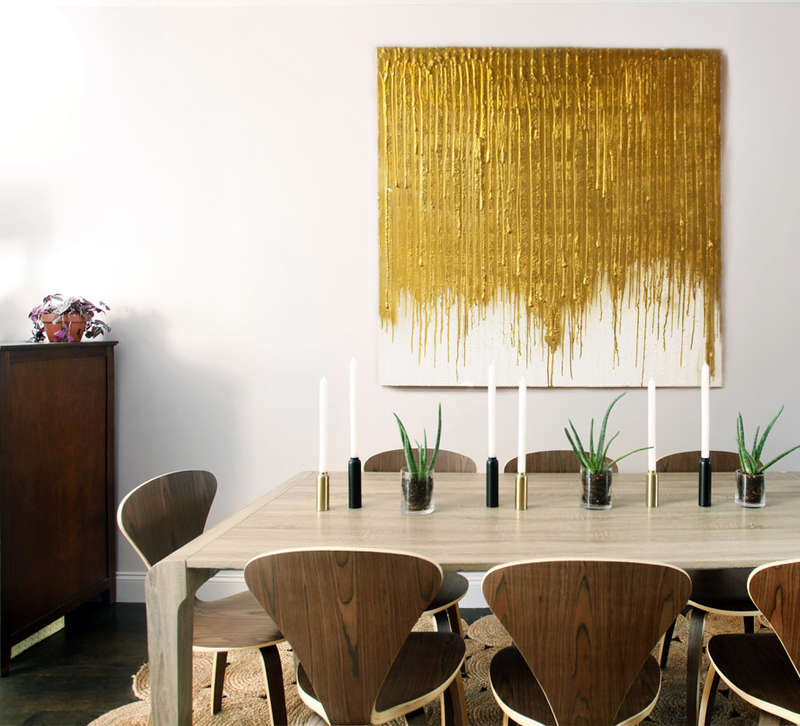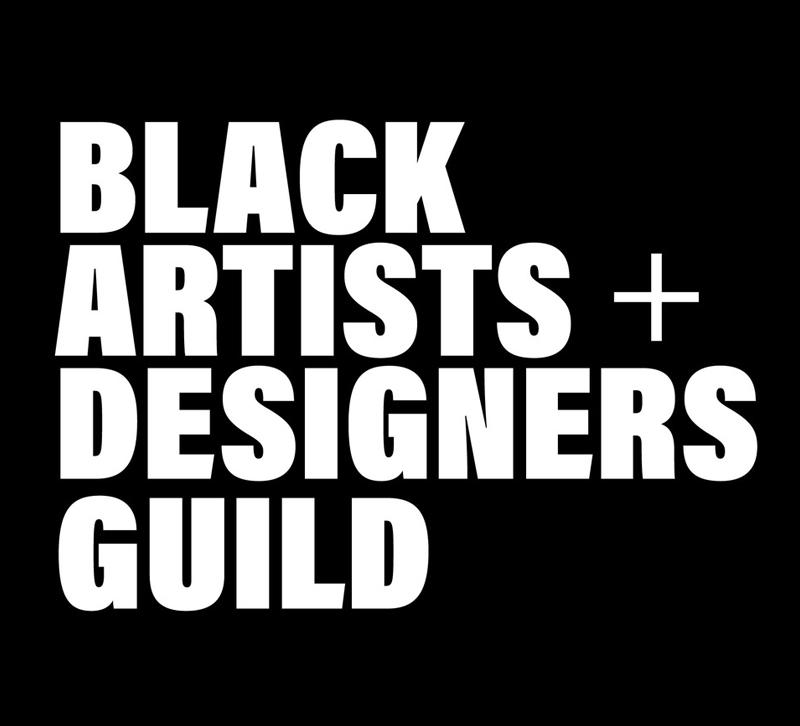When flipping through a design magazine or scanning the lists of panelists at markets, you might not take a running tally of how many black or white interior designers might be featured — especially if you're used to seeing people who look like you represented at every market or in every issue.
But if you don't see that representation? If you go through several issues of a magazine and do not see one black designer featured? It is hard — or it should be — to miss. It's frustrating, and designer and artist Malene Barnett wants everyone to see and feel that frustration.
In November last year, Barnett joined with other black artists and designers to form the Black Artists and Designers Guild (BADG), an industry group that aims to elevate the voices of black artists and designers in the industry. Members include artists and designers throughout the African diaspora, focusing on all aspects of product design (furniture, art, ceramics, textiles) and interior and architectural design. Most of the members come from the luxury market. Joining the movement for better representation with the Black Interior Designers Network, BADG provides a platform for black artists and designers to make their voices heard within the industry and address the lack of black representation in the media, at markets and with manufacture collaborators.
Jeanine Hays and Bryan Mason, founders of AphroChic, have known Barnett for years and shared her views on the lack of diversity in the home industry — in fact, they founded AphroChic for that exact reason. They joined Barnett and became founding members.
"This is really coming at a good time," says Mason, "when eyes and ears are perhaps a little more open and ready to look and address that this is an issue and be more representative of what the industry actually looks like."
BADG already has over 60 members, all listed on the guild website's directory, and Barnett has big plans for tackling representation and other issues facing black artists and designers.
"The issue is not a lack of talent," Barnett says. "This issue is a lack of exposure and having the industry see that this is a problem and that it needs to change."
The multifaceted definition of representation
The design community is diverse — no questions about it — but it's not always easy to see that when flipping through design publications. White designers are still heavily featured, and that makes an impact on those who are left out.
"I remember even when I was in school," Barnett relates, "I was that young designer or aspiring designer, and I looked for people who looked like me for sources of inspiration, and I barely found any then and to have the same experience now, fast forward 20 years, it's ridiculous. It's more than ridiculous. It's time to change the narrative."
The media is just one aspect of representation. Having black designers sitting on panels and discussions at markets and industry events matters too. Last September, Barnett called out the New York Design Center on Instagram for its lack of black representation during What's New What's Next. While other people of color were represented, there was not one black designer or artist sitting on any of the many panels going on during the one-day event.
"These are buildings that are very representative in the industry, where designers are shopping." she explains. "Yet when events go on, we're still being left out."
Media representation means more to designers than just personal satisfaction. Manufacturers look to publications and markets to find new designers to work with. As a result, fewer black designers and artists land contracts with manufacturers.
But more representation is only part of the equation. It's also a matter of better representation, tackling issues of cultural appropriation and the language of design, also matter. When prints and materials from African nations are used on products, their meanings and origins are often left out and given a generic label like "ethnic" or "tribal." These terms have no real meaning to black designers, Barnett explains, and they infer that the pattern or product comes from something or someone primitive, or at least "other."
"We're not a part of the conversation," Barnett says, "and when we are, we're already grouped into a separate group called 'ethnic,' but again, it's been a label that's been forced upon us and how people are supposed to be talking about any non-white design."
Though the guild will be working towards more and better representation in the industry, it is not solely the guild's responsibility. Members of the press, those at the market and design centers and manufacturers need to make diversity and representation a priority all the time and make it of standard of any issue or event.
"They have to be conscious as a whole within the organization the importance of the representation and sharing the viewpoints of design from a different perspective," Barnett says.
Ignoring the black artists and designers will only hurt the industry, Hays adds.
"I don't think it's not that we don't exist or we're not out there, but I do think that there's such a lack of outreach that's happening, and if that outreach doesn't happen, people just won't show up," she says. "They're not going to come to these events. They're not going to come to High Point Market or these things because they just don't feel that it's a space where they're being asked to be included."

The guild at work
Barnett and other BADG members have already sat down with editors at design publications such as Elle Decor, New York Magazine and Architectural Digest to talk about black representation in their publications. Thus far, the conversations have been positive.
"We need to look at who are the people that are telling the stories because who writes about design, they're incredible gatekeepers in who gets featured and who doesn't," Hays says. "What BADG is trying to do is combat that and sit down with publications and make real alliances."
Barnett had plenty in store for BADG members this year. She's planning a BADG Talk series, "exploring Black culture in Art & Design." Barnette says pop-ups and press previews will also be going on, and she's planning a brown bag lunch series to get industry professionals together to talk business. But Barnett says better representation of black artists isn't a job solely for members of the guild. It will take the whole industry working together to make changes, from market centers to manufacturers, the press and other designers.
For members of the press and seminar and event organizers, it should become bothersome to see magazines or panels with only white designers featured. As Barnett said, there is plenty of talented black designers. More effort needs to be made to include them, and Mason adds that having a diverse publication should always be a priority of editors and not something that is emphasized at particular times (think Black History Month) and not others.
"When it becomes something that you do habitually," Mason says. "When seeing a lack of diversity is the jarring moment that makes you think, 'okay well something is missing here, what are we not doing?' more so than seeing a moment of diversity becomes a time for a particular panel. That's when real progress will be made."
Designers and manufacturers should also be bothered by a lack of diversity, but Hays says firms and manufacturers can go a step further by seeking out student interns of color. AphroChic takes interns every year, and even though not every intern stays in the design world, the experience exposes them to all types of opportunities. Hays and Mason work directly with schools to find interns, and several major design schools have started design groups specifically for black students.
"We're working with students of color to introduce them to the interior design field, and it doesn't matter. Sometimes they're not interior designers," Hays says. "We've had students that wanted to study film and videography, and they're working with us from a video standpoint and a social media standpoint, but we're basically introducing them to 'hey this is a field that you can do something in it from content creation, social media to actually doing the sketch-up and design work,' but I think it's really important, that outreach."
The industry can only benefit and grow from greater inclusivity. It is now up to all members of the home design industry to have truly honest conversations about diversity, racism and representation within their own organizations and to make more and better representation a standard — not an afterthought.







